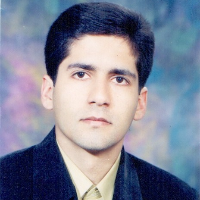Evaluating Environmental Factors Affecting the Genesis of a Sense of Holy Space in Mosques: Case Studies of Bazar-e-Tehran Mosque, Tehran University Mosque, Al-Jawad Mosque of Tehran)
The mosques as the principal representative of the physical structures of Islamic architecture have once been a clear demonstration of the crystallization of sacred space in the human-built environment, while today, unfortunately, due to intolerance and neglect, often their key and vital quality is lost in purely physi cal form. The purpose of this study is to recognize the concept of sacred space and evaluate its criteria in several contemporary mosques seeking to answer the question of how and to what extent the criteria of sa cred space concept are presented in contemporary mosques. The method of this research is descriptive-evaluation and its data collection is based on the study of library resources, observation, and content analysis. Regarding the experience of the sense of sa cred space in the mosque, the extent of sense of sa cred space in the three mosques varies. This feeling is higher in Imam Mosque (former Shah) than in the other specimen; the mosque of Tehran University is in the middle position compared to the other two sam ples and the al-Jawad mosque is in a completely dif ferent position, in terms of objectively and mentally signifying a sense of sacred space. Poorly evaluated, it is largely due to the modern, minimalist look that was taken into consideration when constructing the building. The study aimed to identify the sacred sig nificant implications of sacred space in mosques and the factors that create the sacred space of the mosque in the mind of the audience. The results con firm that there is a significant relationship between the age of the attendees and the motivation to attend the mosque, and the absence of a significant relation ship between the gender of the attendees and the motivation to attend the mosque show that the Imam Mosque has the best situation compared to the other two mosques. Among the reasons that show that Imam Mosque in Tehran is superior to other mosques in sense of sacred space, we can mention the follow ing: Using four symmetrical porch pattern on four sides of yard with same dimensions along with other physical elements (courtyard, Dome, shrine, minaret, pulpit, and altar) in this mosque indicates the exist ence of objective indications of sacred space. Care fully considered in the Shabestan geometric system, this geometry is close to the square (on either side of the dome), which induces a sense of balance to the audience. The geometry of the dome is quite close to the square and the technique of turning the square into a circle, which is part of the mosque’s architec ture, has been elaborately applied. In the meantime, all of the above is milder in the Tehran University Mosque, and in the Al-Jawad Mosque almost all of the above is not presented about the sense of sacred space.
- حق عضویت دریافتی صرف حمایت از نشریات عضو و نگهداری، تکمیل و توسعه مگیران میشود.
- پرداخت حق اشتراک و دانلود مقالات اجازه بازنشر آن در سایر رسانههای چاپی و دیجیتال را به کاربر نمیدهد.


